Seoul does its own thing, and it is magic to see how everyone loves this city.
This is a city where you will see centuries-old temples right next to a modern glass tower. Yes, you heard me right! There is a great fusion going on.
When in Seoul, one second, you are dodging the crowds at a street food stall, the next, you are in some high-end boutique.
This city has layers to impress everyone. With more than 10 million people, 600 years of history, and now K-pop is covering everyone’s hearts.
Even if you stay for a month, you will find interesting things to do in Seoul, South Korea, every single day.
In the morning, you can wander through a palace. Afternoons are the best time to go to markets, as they will be less crowded. By night, head to karaoke in Gangnam.
Literally, South Korea has countless places to visit. But I know your trip can be shorter, so this blog highlights the best city with only the best things to do.
20 Best Things to Do in Seoul
Seoul can surprise you at every corner. From temple bells to midnight street food stalls, these curated experiences will help you discover the soul of this vibrant capital city. Here are some of the best things you need to do in Seoul.
Explore Gyeongbokgung Palace
Gyeongbokgung, which means “Palace Greatly Blessed by Heaven,” is Seoul’s largest and most iconic royal palace.
It was built in 1395; this stunning complex once served as the primary residence of Joseon Dynasty kings.
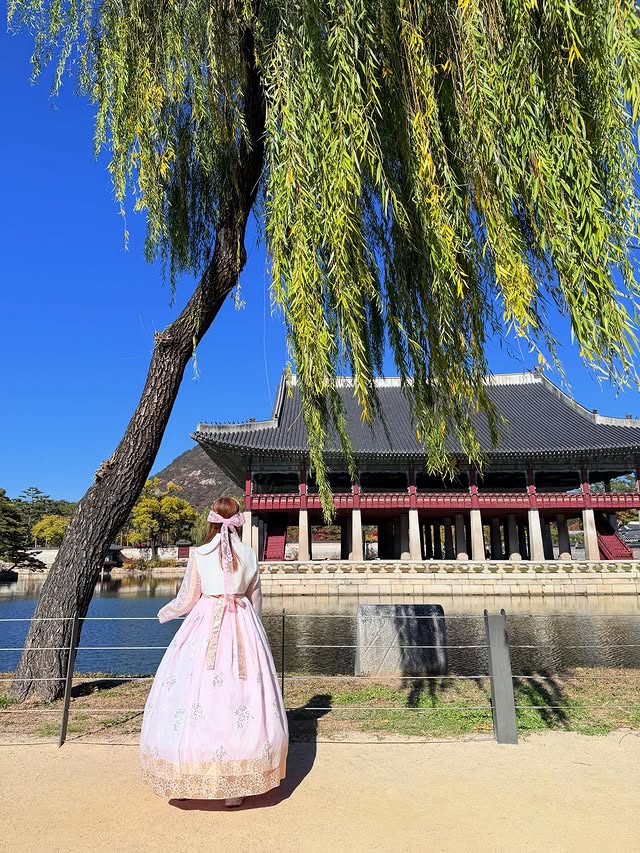
When you walk through the imposing Gwanghwamun Gate, you can watch the changing of the guard ceremony, held at 10 AM and 2 PM, which lasts about 20 minutes.
You can visit during cherry blossom season for picnics on the palace grounds. And Koreans love picnics, which makes it one of the top tourist attractions in Seoul for both locals and tourists.
- Location: Jongno District, Seoul, South Korea
- Cost: Approximately 200 INR
- Time: 9:00 AM – 6:00 PM
Note: Arrive before 9 AM for fewer crowds. You can rent a hanbok nearby for 650-1,200 INR, and it’s free to enter with traditional dresses. Remember the palace closes on Tuesdays.
Wander Through Bukchon Hanok Village
Bukchon Hanok Village showcases hundreds of traditional Korean houses called hanoks, which are nestled between Gyeongbokgung and Changdeokgung palaces.

Here, all these gorgeous old-school Korean houses, hanoks, look unique with curved tile roofs. The entire place looks like it belongs in a period drama.
These days, most of these houses are tea houses, little museums, or accommodations available for rent, and they truly offer the best stay experience in Seoul.
- Cost: Free to explore
Tip: Visit on weekday mornings before 10 AM to avoid tour groups. Wear comfortable shoes as the alleys are steep. Respect “No Photo” signs on private residences.
Visit N Seoul Tower for Panoramic Views
Perched atop Namsan Mountain, N Seoul Tower has been Seoul’s most recognisable landmark since 1969.

You can take the cable car up or hike this scenic trail. You need to visit here for 360-degree views across the entire city.
The tower features observation decks, rotating restaurants, and the famous “Locks of Love” terraces where couples attach padlocks symbolising eternal love. This ranks among Seoul’s top attractions as it attracts a lot of honeymoon couples.
- Cost: Approximately 1,000 -1,600 INR (cable car costs approximately 940 INR for a round trip)
- Time: 10:00 AM – 11:00 PM (Saturdays it is open till 12:00 AM)
Tip: Buy online tickets, as they are cheaper.
Experience a Traditional Jjimjilbang
A jjimjilbang is a Korean spa experience combining gender-divided bathhouses with communal relaxation areas.

They are also called bathhouses, offering 24-hour facilities with hot and cold pools, various saunas (ice room, salt room, charcoal room), sleeping areas, restaurants, and entertainment zones.
You can see locals treat jjimjilbangs as social spaces. They spend entire afternoons here with family and friends.
This activity is one of the things to do in Seoul, South Korea, for an authentic cultural experience.
- Best Jjimjilbang in Seoul: Spa Lei, Seoul, Myeongdong Mud, and Lotte Boseok Sauna Jjimjilbang.
- Cost: Approximately 650 -1,600 INR
Tip: Though most provide a small towel and basic toiletries, you can carry yours too. Visit midweek afternoons for a quieter experience. Don’t leave valuables in common lockers; use the provided safes.
Shop and Eat at Gwangjang Market
Gwangjang Market, Seoul’s oldest traditional market, dates to 1905.
This massive market spans two floors, packed with hundreds of vendors selling everything from vintage clothing to wedding fabrics.
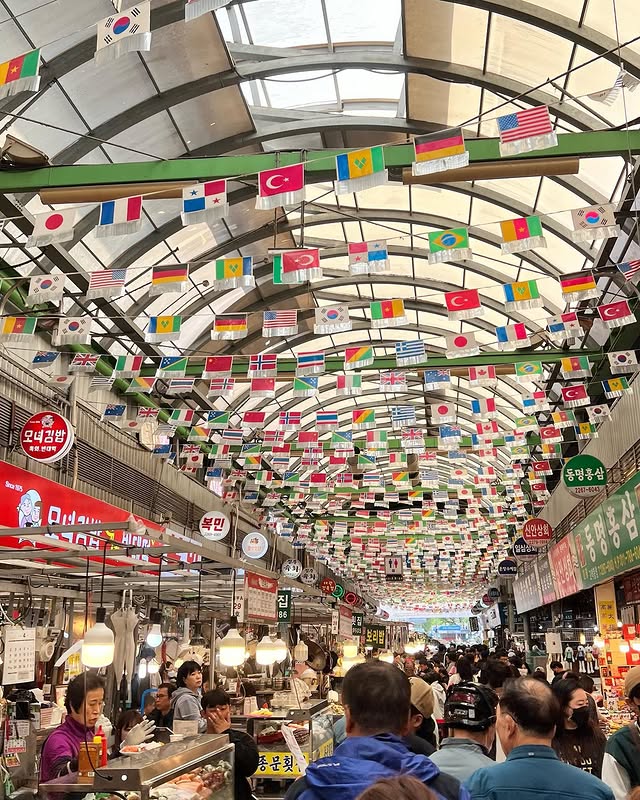
But the real attraction is the food alley. Locals come here for authentic, affordable meals and the lively atmosphere that captures the spirit of old Seoul.
While exploring markets, keep an eye out for unique things to buy in South Korea, as traditional snacks and handicrafts are affordable here.
- Market Time: Visit between 10 AM and 5 PM for the full market experience. However, the food shops are open from 9:00 AM to 11:00 PM.
Tip: Bring cash, as many stalls don’t accept cards. And most vendors will not understand English, so you can try using the Google Translate app.
Take a Han River Bike Ride and Picnic
The Han River is Seoul’s lifeline and offers 40 kilometres of parks, bike paths, and recreational areas.
Locals come here for “chimaek” (chicken and beer) picnics, especially during warm evenings. Here you have many options, like renting bikes at any park section and cruising along dedicated paths with skyline views.
After sunset, the area transforms and gives you the best spot to enjoy the nightlife in Seoul with riverside bars and food stalls.
Definitely, the Han River is one of the best places to visit in Seoul if you love rivers, bridges lit up at night, and outdoor concerts.
- Popular Spots: Yeouido Hangang Park (cherry blossoms, fountains), Banpo Hangang Park (rainbow fountain bridge show) and Ttukseom Park (water sports)
- Cruise: Approximately 1,300 INR
Tip: Download food delivery apps (Coupang Eats & Baemin) to order chicken to your picnic spot in Han River parks.
Hike Bukhansan National Park
Just 30 minutes from downtown, Bukhansan National Park offers dramatic views, ancient temples, and challenging hiking trails within city limits.
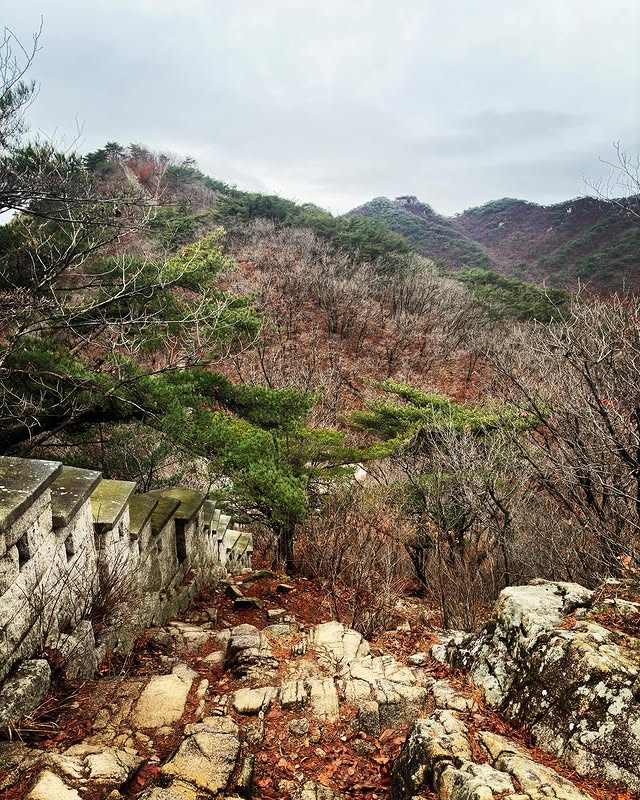
The park contains over 100 Buddhist temples and fortress walls dating to the Joseon Dynasty. Baegundae Peak, the highest point at 836 metres, provides stunning views but requires steep climbing with rope sections.
The must-do things in Seoul for nature lovers include these easily accessible mountain escapes.
- Cost: Entry is free.
Tip: Start early, as this place has popular hiking trails that get crowded by 9 AM on weekends. Trails are well-marked, but they are steep; proper hiking shoes are essential.
Shop in Myeong-dong
Myeong-dong is Seoul’s premier shopping district and a spot for beauty products. You have options of both Korean and international brands. Also, some cosmetics shops offer free samples.
You can find major stores like Lotte Department Store, Shinsegae, and Olive Young for branded items. At the same time, smaller shops sell everything from K-pop merchandise to cheap clothing.
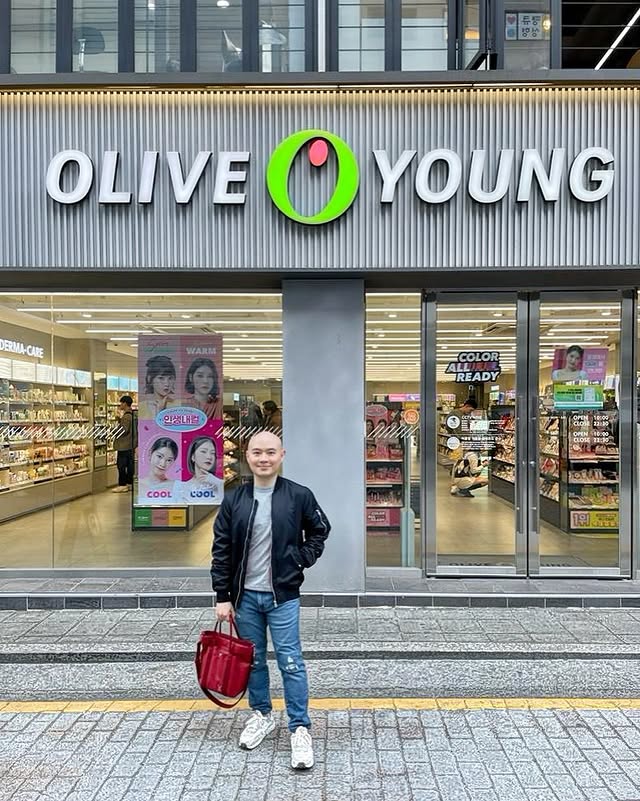
Then, in the street food stalls, you need to try tornado potatoes, cheese lobster, and Korean corn dogs.
Tip: Bargaining is not common in stores, but in street shops, you can try to get discounts for bulk purchases of cosmetics.
Visit Changdeokgung and the Secret Garden
Changdeokgung Palace, a UNESCO World Heritage Site, is considered the most beautiful of Seoul’s five grand palaces.

Unlike Gyeongbokgung Palace, which is grand, Changdeokgung was designed to blend with the natural landscape.
The highlight here is the Secret Garden, a 78-acre sanctuary with lotus ponds, pavilions, and 300-year-old trees.
You need access to enter the garden, so take a guided tour. In the past, this garden was the royal family’s private retreat, and many structures remain exactly as used by the last emperor. The Seoul top attractions include this perfectly preserved example of Korean palace architecture.
- Cost: Approximately 200 INR for palace entry. For the garden tour, you need to book ahead and pay separately.
- Time: 9:00 AM – 9:00 PM (Closed on Monday)
Tip: Book Secret Garden tours online weeks in advance; they sell out fast, especially for English tours. The garden tour lasts 90 minutes with limited rest stops.
Cafe Hop in Trendy Neighbourhoods
Seoul’s cafe culture is obsessive. You can find themed cafes ranging from cat cafes to sheep cafes, raccoon cafes, and elaborate dessert cafes.
In the Hongdae area, the cafes cater to university students with an artistic, quirky vibe featuring live music.
The Yeonnam-dong area, opposite Hongdae, offers quieter, more sophisticated cafes in renovated houses.
Seongsu-dong area features industrial-chic cafes in converted factories. Here, locals treat cafes as workspaces, social hubs, and Instagram studios.
Cafes to Go to in Seoul: Coffee Hanyakbang, Rewire Coffee, Ediya Coffee Lab, Fritz Coffee Company, Dohwa, and many more.
Note: Most cafes have minimum ordering requirements per person, which means each person needs to order one drink. Weekday afternoons are less crowded.
Indulge in Korean Street Food
Korean street food goes far beyond simple snacks. If you see Koreans eat, it is like an art form; they eat their food with much passion.
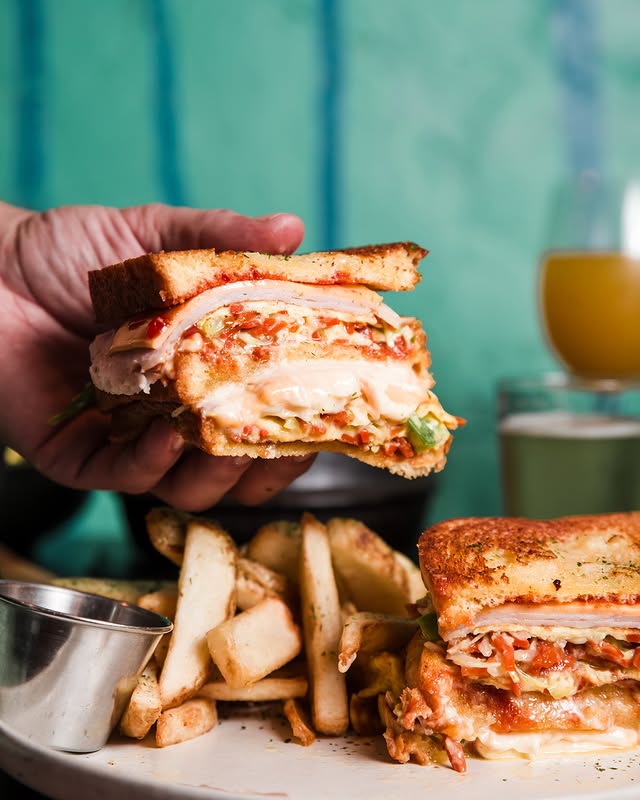
In Korea, there are some must-tries. You can start with tteokbokki (spicy rice cakes), hotteok (sweet pancakes), odeng (fish cake soup), bungeoppang (fish-shaped pastry), Korean fried chicken, and the list goes on.
- Location: Myeongdong and Namdaemun Market are the best for street food stalls.
- Cost: 180 INR – 400 INR per dish
Tip: Peak times mean fresher food but longer waits (6:00 PM to 9:00 PM is a busy time). Bring tissues, as it’s not common for vendors to provide napkins.
Catch a K-pop Show or Visit K-pop Venues
K-pop has become the talk of the world, and Seoul is its heart for that. There are some famous entertainment company buildings like SM Town, YG, JYP Entertainment, and many more.
You can shop at K-pop stores in Myeongdong and Gangnam, or attend live shows that happen regularly.
If you like energetic K-pop music, go to some of the best pubs: All That Jazz, BoomBox Beer & Music, Club Evans, and Get Allright.
Tip: If there are any specific music shows that require advance online booking. There are dress code requirements; please avoid shorts and sandals.
Take a Korean Cooking Class
Every time we watch K-dramas, we get tempted by the colourful food that is shown and how they eat it. But we can’t make them, so eventually, we end up buying instant noodles to satisfy our cravings.
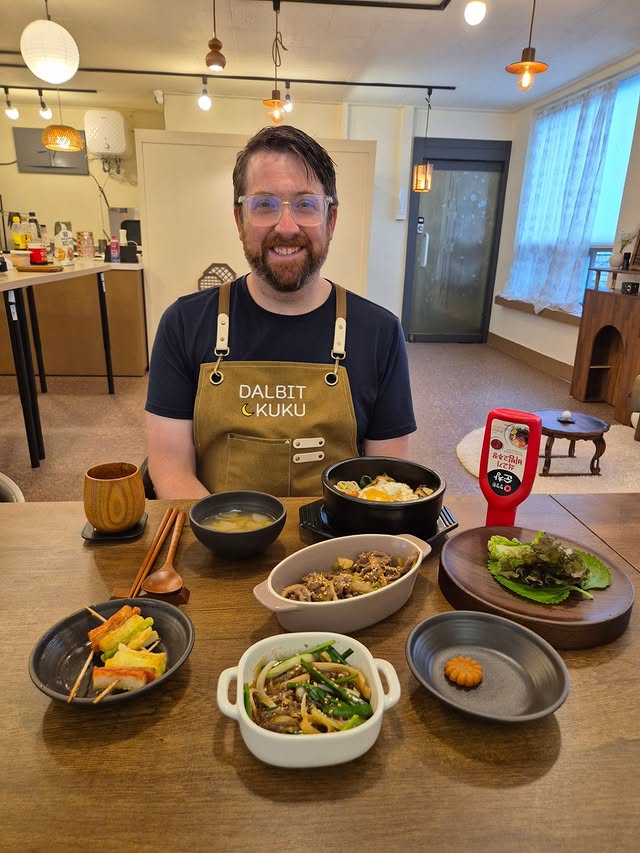
So, take Korean cooking classes that can teach you to prepare classic dishes like kimchi, bibimbap, bulgogi, japchae and many more.
They also explain the ingredients to you and teach you the techniques. Most classes typically include market tours to buy ingredients.
Instructors will also explain the science behind kimchi fermentation, proper rice cooking methods, and Korean table setting etiquette. In a four-hour session, you will learn the essence of Korean cooking.
- Cooking Class Cost: Approximately 3,800 – 8,000 INR
Tip: When booking, make sure they have free cancellations. So, in case of a change of plans, you can alter at the last minute.
Explore Dongdaemun Design Plaza and Night Markets
The Dongdaemun Design Plaza (DDP) is Seoul’s most futuristic building, featuring curving metallic facades and no straight lines. This is an amazing architecture designed by Zaha Hadid.
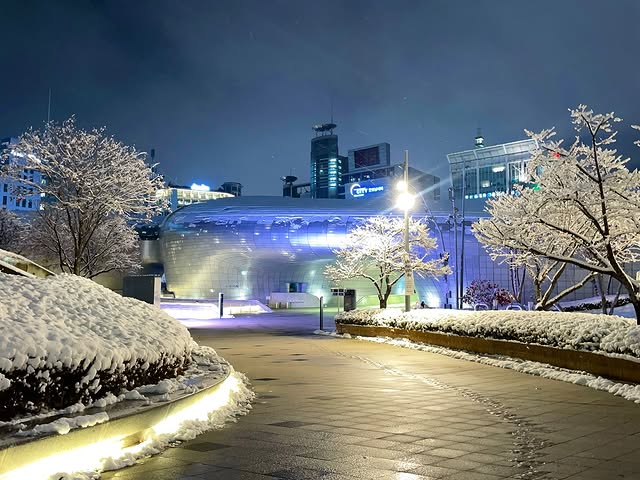
The complex hosts exhibitions, fashion shows, and design shops. If you visit at night, it will be the most beautiful thing to see in Seoul; the LED rose garden is illuminated beautifully. Surrounding DDP are Dongdaemun’s famous 24-hour shopping malls and night markets.
- Location: Dongdaemun (Dongdaemun History & Culture Park Station, Lines 2, 4, 5)
- Cost: Free to visit DDP; shopping varies
Tip: Night shopping peaks after 10 PM when stores fully open. Bargaining is possible in street markets but not in malls. The LED rose garden glows best after dark, free and incredibly photogenic.
Visit the DMZ and JSA
Taking a Demilitarised Zone tour is Korea’s most unique experience. You can visit the border between North and South Korea. You will have a chance to stand at one of the world’s last Cold War spots.

Then the exclusive JSA (Joint Security Area) tour lets you stand in the blue conference rooms. The guide will explain to you the events that took place.
This is the only place to visit in Seoul that can give a clear view into the historical context of the Korean War and the ongoing division.
- Tour Cost: Approximately 3,400 – 5,000 INR
Tip: You need to book tours 2-3 weeks in advance. JSA tours have strict passport requirements and dress codes. You can wear long pants and a collared shirt or a t-shirt, and wear shoes only.
Explore Insa-dong’s Traditional Culture Street
Insa-dong is a beautiful place in Seoul that still preserves traditional Korean culture. This neighbourhood specialises in antiques, traditional crafts, art galleries, and tea houses. You can roam around and buy anything as a souvenir to take back home.
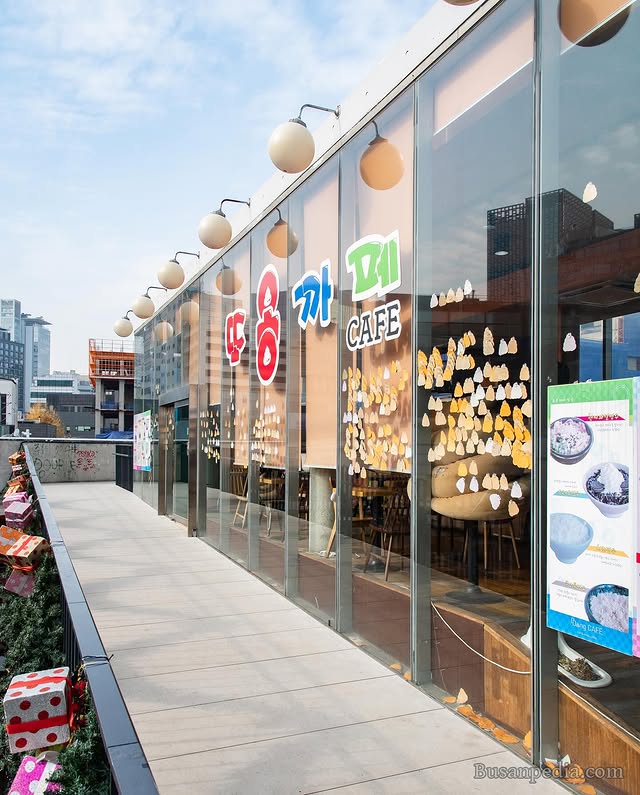
The main street of Insa-dong will be filled with street performers and artists on Sundays. Also, it will be closed to traffic on that day.
If you go during the weekdays, you can experience a calm local vibe in traditional tea houses with Korean teas and rice cakes.
Tip: If you are visiting South Korea for cultural experiences, then stay for 2 days. Many shops demonstrate traditional crafts, such as pottery or fan-making.
Experience a Temple Stay
Temple stay is one of the most unique things to do in Seoul, South Korea, as it offers immersive experiences in Buddhist culture.
When you join this program, you will have the most challenging days, especially if you are stuck with a city life schedule.
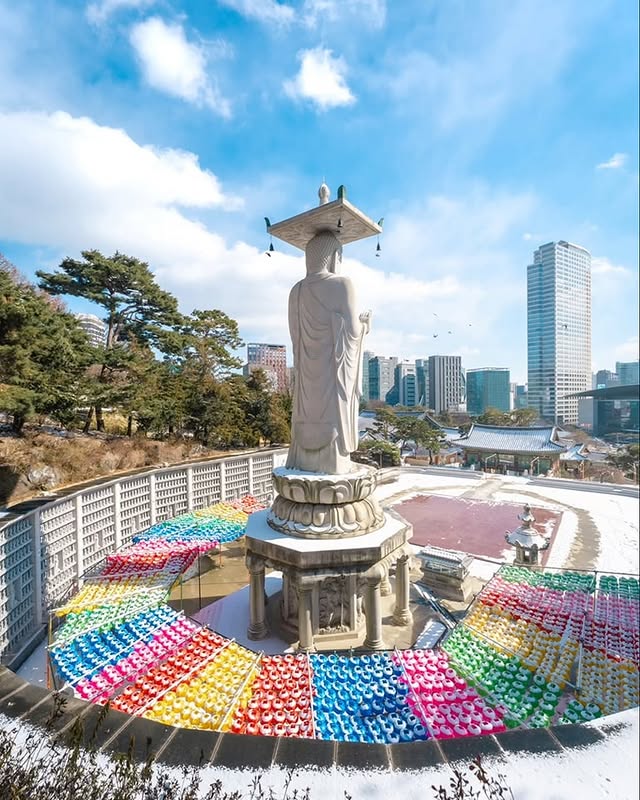
Here, you will be doing meditation, tea ceremonies with monks, having communal vegetarian meals, evening chanting, and waking up to the 4 AM bell.
If you are ready to wear traditional temple clothing and follow monastic schedules, this is the thing you need to do when visiting Seoul.
- Location:Bongeunsa Temple (Gangnam), Myogaksa Temple (Hongdae), Jogyesa Temple (Anguk)
- Cost: Approximately 3,500 INR per night.
Tip: This is not a tourist attraction in Seoul, so you need to be mindful during your stay and respect the culture. Take only modest clothes and follow all the photography restrictions.
Ride the Lotte World Tower Sky Shuttle
Lotte World Tower is Korea’s tallest building. On the 117th-123rd floor, you have Asia’s highest observation deck.
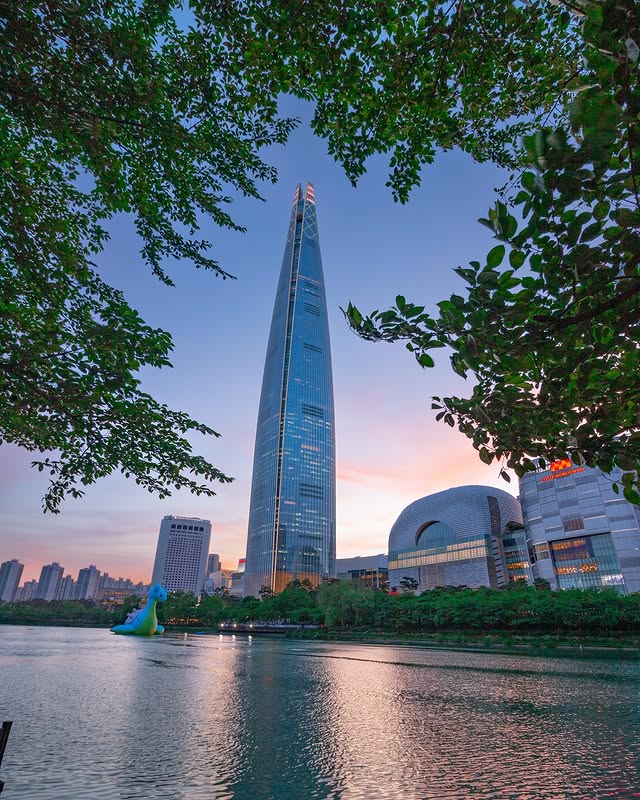
The Sky Shuttle elevator reaches the 117th floor in one minute. The observation deck features glass floors, an outdoor terrace, and 360-degree views extending to the Yellow Sea on clear days. And for the perfect sunset views, you need to go to Deck 123.
The tower also has Lotte World Mall with luxury shopping and Seoul Sky 31 Buffet. You don’t have to plan your days with different places to visit in Seoul; going here will satisfy your entire day.
Tip: You need to book fast-track tickets online to skip lines. Visit just before sunset to see both day and night views. When you get combined tickets with Lotte World, you will get them for a discounted price.
Visit Jogyesa Temple for Urban Peace
Jogyesa Temple serves as the chief temple of the Korean Buddhist Jogye Order. It is located unexpectedly in central Seoul near Insadong.
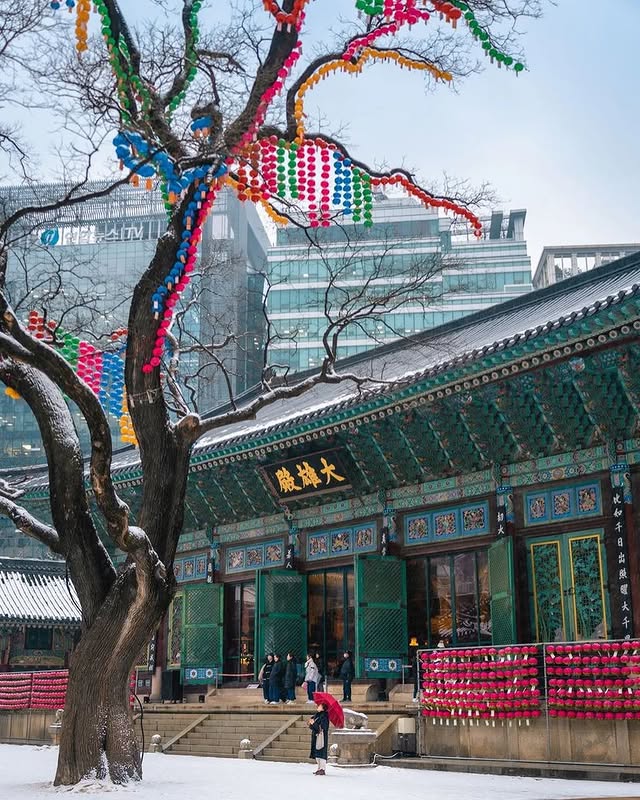
The temple grounds provide a peaceful refuge from urban chaos. In the main hall, you have an enormous Buddha and elaborate ceiling paintings.
Monks perform daily services at 4 AM and 6 PM. There are free temple programs that offer tea ceremonies, meditation sessions, and cultural talks.
- Cost: Free entry
Tip: Visit early morning for meditation sessions or evening for chanting ceremonies. Dress modestly and maintain silence in prayer areas. Buddha’s Birthday (May) features stunning lantern displays; arrive early as crowds pack the area.
Discover the Artistic Ihwa Mural Village
Ihwa-dong was nearly diminishing. But it got transformed into an outdoor art gallery neighbourhood through the Naksan Project.
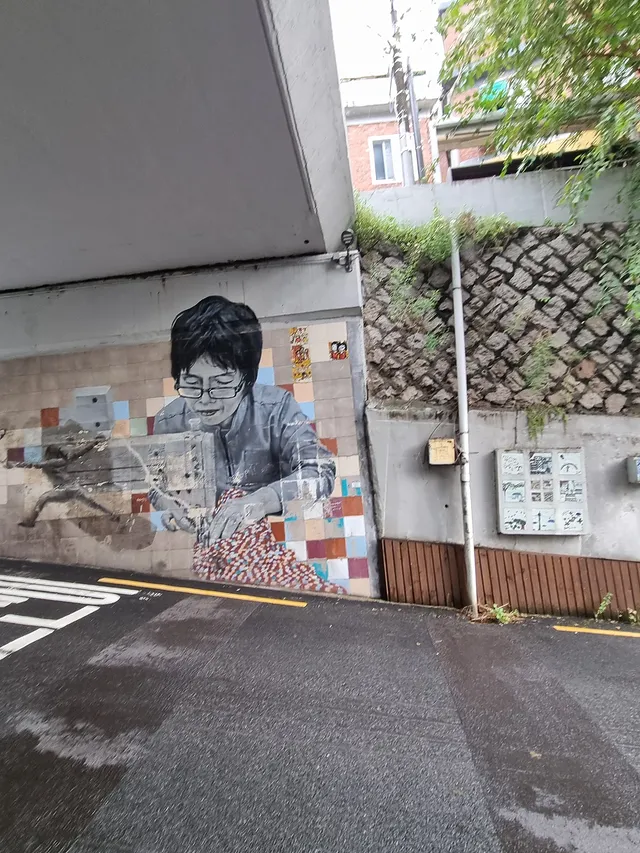
Artists have covered walls, stairways, and buildings with colourful murals, sculptures, and installations that are way too cool to ignore.
You can see paintings of a man stitching clothes, a guy riding a bike, a cloud hugging and dancing. This is definitely one of the prettiest tourist attractions in Seoul.
When you are here, you can also hop into small cafes and local food stalls that give you fresh and delicious food.
Tip: Put on your comfortable shoes, the village consists entirely of steep staircases. Go early morning or late afternoon for better lighting. Some original murals have faded or been replaced, so each visit differs.
Conclusion
Seoul masterfully balances its rich historical heritage with relentless modernity, creating a destination that satisfies every type of traveller.
You have a fascinating palace where kings once walked out of it to the streets. Now they are blended with contemporary energy.
Whether you are seeking cultural and culinary experiences, an urban lifestyle, or nature, Seoul’s top attractions deliver beyond your expectations.
Frequently Asked Questions on Must-Do Things in Seoul, South Korea
How many days does a tourist need in Seoul, South Korea, to explore major attractions?
A minimum of 3 days is enough to cover some of the famous places in Seoul. In which you can see Gyeongbokgung Palace, Bukchon Hanok Village, N Seoul Tower, Lotte World and do some shopping.
But 5-6 days for a deep dive into the authentic Seoul vibe. You can include many local experiences, like taking a Korean cooking class, temple stay, relaxing at bathhouses, and trying local bars for a real local experience, rather than the rooftops.
What is the most efficient and budget-friendly way to get around Seoul for tourists?
The subway in Seoul is super cool and highly maintained. It is a faster and affordable transport option covering all major attractions in the city.
You can purchase a T-money card at convenience stores for seamless travel on subways, buses, and taxis. And the most important thing is to download the KakaoMetro app for English navigation and real-time updates.
What are the best months to visit Seoul, South Korea?
April to May (spring) and September to November (autumn) are the best as the weather is comfortable, with minimal rain, and picturesque seasonal colours.
Where should you stay in Seoul?
Each area in Seoul is the best, but it depends on your needs. So, pick from the list below that suits you
- Myeongdong and Jongno offer the best for first-timers, as you can find accommodation near palaces and markets.
- Hongdae suits younger travellers wanting nightlife, cafes, and artistic vibes with excellent subway connections.
- Gangnam offers a modern Seoul experience with upscale shopping and dining, but is farther from historical sites.
- Itaewon offers an international atmosphere, diverse restaurants, and a central location.